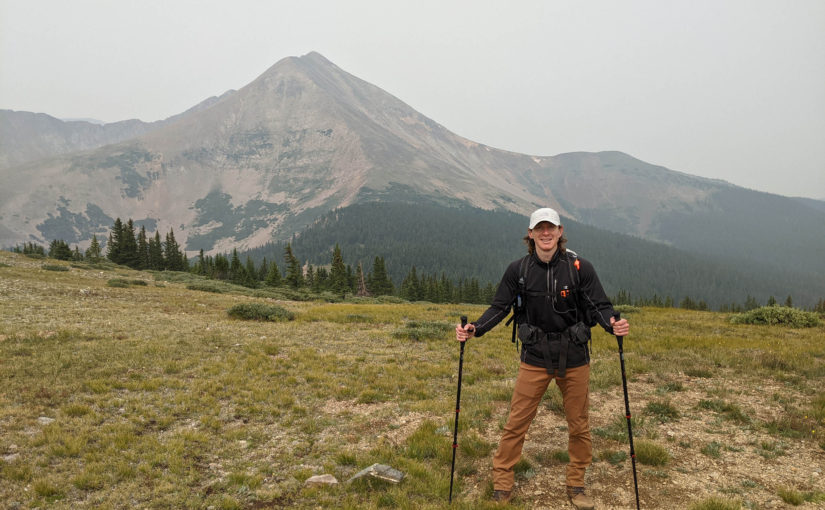An eight-day, 160-mile through-hike into the wilderness alone
First step: go into the wilderness alone.
That was one of the notes I jotted down in 2019 when I read The Second Mountain: The Quest for a Moral Life, by David Brooks. The message ties to the book’s fifth chapter, entitled “The Wilderness,” where Brooks writes:
At the moment when you are most confused about what you should do with your life, the smartest bet is to do what millions of men and women have done through history. Pick yourself up and go out alone into the wilderness.
A lot is gained simply by going into a different physical place. You need to taste and touch and feel your way toward a new way of being. And there are huge benefits in leaving the center of things and going off into the margins. “You are living through an unusual time,” Henri Nouwen writes.
You see that you are called to go toward solitude, prayer, hidenness, and great simplicity. You see that, for the time being, you have to be limited in your movements, sparing with phone calls, and careful in letter writing…. The thought that you may have to live away from friends, busy work, newspapers, and exciting books no longer scares you…. It is clear that something in you is dying and something is being born. You must remain attentive, calm, and obedient to your best intuitions.
In the wilderness, life is stripped of distractions. It is quiet. The topography demands discipline, simplicity, and fierce attention. Solitude in the wilderness makes irrelevant all the people-pleasing habits that have become interwoven into your personality.
These ideas struck a strong chord and they continue to resonate deeply with me on many levels.
For example, they connect with some of my takeaways from the book Antifragile: Things that Gain from Disorder, by Nassim Taleb, such as the Barbell Strategy:
Barbell Strategy: A dual strategy, a combination of two extremes, one safe and one speculative, deemed more robust than a “monomodal” strategy; often a necessary condition for antifragility. For instance, in biological systems, the equivalent of marrying an accountant and having an occasional fling with a rock star; for a writer, getting a stable sinecure and writing without the pressures of the market during spare time. Even trial and error are a form of barbell.
In this case the wilderness balances the barbell by adding a jolt of chaos and discomfort to one end, with the order and comforts of daily life in a free and civilized society at the other extreme.
Another example relates to the Wim Hof Method and my experiences in Poland and Iceland learning how to manage stress and trauma in the cold. Specifically, one of my four big takeaways from the Iceland adventure was:
Carve out time to focus on yourself. Caring for others is great, and you want to build yourself into the strongest platform possible; to provide the strongest connection and best support for others as possible. That means you need to be able to flip the switch between focusing on others to focusing on yourself like an icy ninja. Domesticate your wandering, thinking mind that’s consumed by the outside world and all that comes with it, and dedicate a portion of your time — solid, non-negotiable, prioritized block(s) of your day — to drop in to the inside world, your self.
Going into the wilderness alone is a great way to carve out this time to focus on yourself.
We can also think of the wilderness figuratively. In that sense, I see my big move in 2020 as a kind of leap into the risky wilderness of the unknown.
With this backdrop in mind I made it a 2021 summer priority to go for the first time into the literal wilderness alone.
I carved out a week in late August to through-hike a section of the Colorado Trail, a state treasure of recreation trail that stretches 567 miles from Denver to Durango. Many people take a month or so off to through-hike the whole thing.
That seemed like a lot to bite off for my first through-hiking experience, so I did what many other people do instead and picked a section of the trail to tackle over a shorter time frame. A solid week of wilderness seemed like a manageable amount for this first foray.

The plan: nine segments in a week
Four excellent resources helped a ton in planning this hike: 1) The Colorado Trail Foundation website, 2) the Colorado Trail Guidebook, 9th Edition, 3) The Colorado Trail Databook, 8th Edition, and 4) the CT Shuttlers List, which offers contact info for shuttle services to and from spots along the Colorado Trail.
It seemed logical to start in Denver and crank out as many segments as possible over the course of the week. I originally planned on starting at Segment 1, but later decided to skip it and start at Segment 2 a day later. The weather was a mess on my original start date, and I needed an extra day to finish prepping. I also read that Segment 1 isn’t all that spectacular, so I didn’t feel like I was missing much by skipping a day on the front end.
With my starting point set at the South Platte River Trailhead at the beginning of Segment 2, I thought Mt. Massive, Colorado’s second-highest fourteener would be a cool finish line. Segment 10 of the Colorado Trail goes right by the summit trail to Mt. Massive. My goal was to hike all the way out there and summit Mt. Massive on my last day of the adventure.
It was a pretty ambitious plan, requiring about 20 to 25 miles of hiking per day. I knew it would be a grind, but I felt like I was in strong shape and up for the challenge.
Using the guidebook, I put together a general itinerary — with camping sites targeted as milestones for each day — and worked from that foundation to figure out what nutrition and gear to bring (more on food and gear shortly).
The day before the hike I drove out and dropped my car off at the ending point of the hike. I parked at the small lot at South Mt. Elbert Trailhead, which is located just a short ways off the Colorado Trail, about 7 miles into Segment 11.
I arranged a shuttle service to pick me up from that ending point and drive me back to Denver, where I would stay the night and then get dropped off at the Segment 2 trailhead early the next morning.
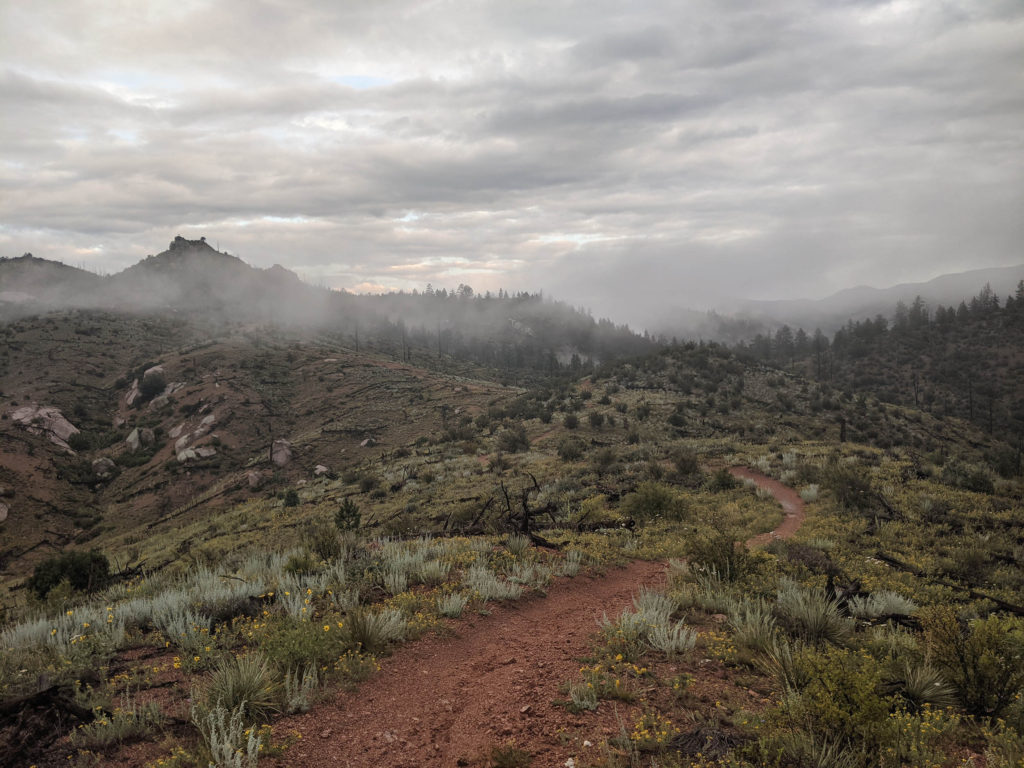
Nutrition and hydration: no-cook, low carb, paleo- and keto-ish
The low-carb, kinda-keto diet I’ve been following for the past couple years is great for backpacking and through-hiking because 1) your metabolism is agile because you’ve conditioned yourself into a fat-burning beast; 2) you don’t need to eat very much to perform; and 3) many keto-friendly foods are simple, easy to prep, and compact to pack. This helped lighten my pack load because I didn’t need to bring a stove, pot or propane.
I started the hike with enough food for four days in my pack.
The day before the hike I mailed myself a resupply package to a hostel in Breckenridge, which serves as a resupply spot located near the end of Segment 6 along the Colorado Trail.
So I hiked for four days, eating all the food in my pack and then dropped into Breckenridge the morning of the fifth day to pick up my resupply package, which provided food for the last four days of my hike.
Here’s the general outline of my daily diet, which was informed by this great guide from Alpine Science:
- Breakfast shake: 1 scoop collagen peptides, 1 scoop whey protein isolate, 1 tsp maca root powder, mix with water in 700 mL sports bottle
- Snacks: Sweet potatoes, almonds, macadamia nuts, pumpkin seeds, dark chocolate, jerky, almond butter mixed with grass-fed butter
- Meals: Cured meats and cheese
- Emergency pick-me-ups: Clif bars and sweet tarts
Staying hydrated was pretty easy to do as well because most segments of the trail passed frequent streams, creeks, rivers and lakes. I used a Sawyer Squeeze filter, with a CNOC 2L bladder to collect and filter dirty water, and two 2-liter Nalgene bottles in the side pockets of my pack as my drinking water reservoirs. I also added electrolytes — 1 tsp salt, 1 tsp potassium chloride, 1 pack of True Lemon flavoring — to one of my water bottles twice per day.
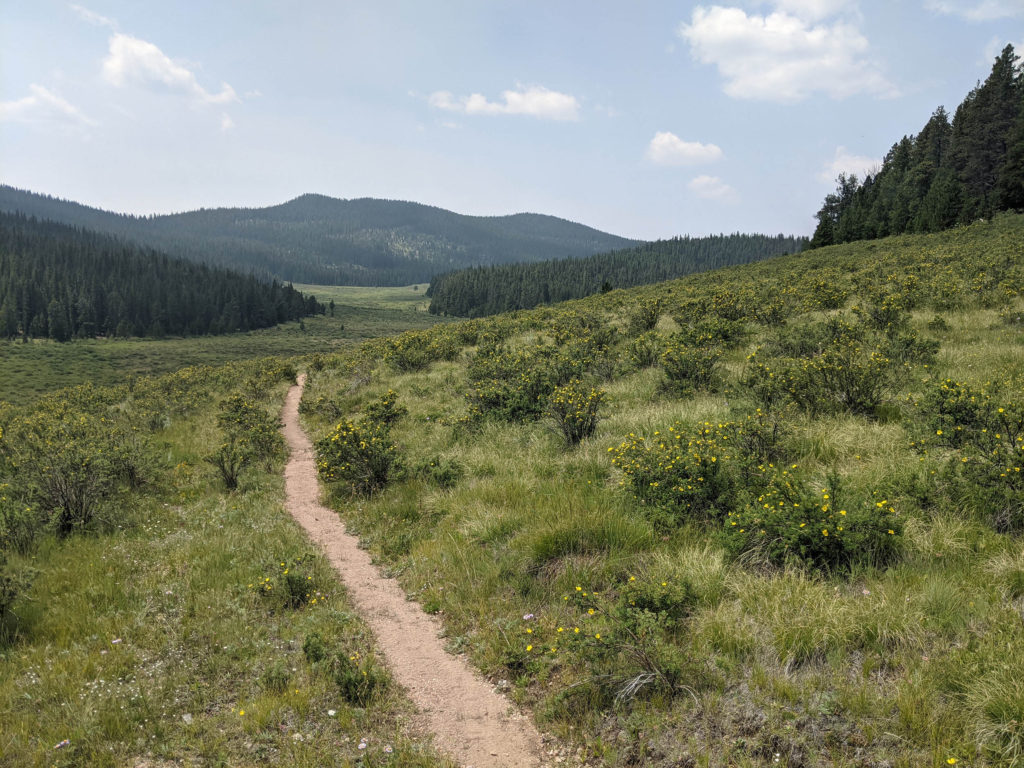
Gear and packing list: relatively ultralight
My base pack weight — with no food or water — came in at respectable 16.8 pounds, and the total pack weight with food and water filled to capacity was 30 pounds.
And even at those trimmed down weight levels, I still overpacked a bit. Here’s the list of gear I brought on the hike, along with comments on items I would change or leave out next time.
- Backpack: Hyperlite Mountain Gear Southwest 2400 (40 liter capacity)
- Sleeping bag
- Insulating sleeping pad
- Nalgene 1L bottles (2)
- Sports drink 700mL bottle
- Hiking pants (wore these the whole time; it got a bit hot during the day, but the protection from the sun and bugs was worth it)
- Nike dry fit running shirt
- Salomon running shorts
- Warm Phoenix Suns beanie
- Quick-dry towel
- Floss
- Toothbrush
- Inji wool socks
- Spare wool socks (2)
- Vivobarefoot hiking boots (these worked fine but my feet got pretty hot during the day; I would have gone with lighter trail running shoes instead)
- Hat for sun protection
- Shelter, stakes and guy lines: REI Quarter Dome SL Tarp
- Tent footprint tarp for the ground
- OR Helium Bivy
- Trekking poles
- Headlamp with spare batteries
- Wool layers
- Champion polyester fleece
- Patagonia Light Shell
- Patagonia Nano Puff Jacket (would have brought my heavier Patagonia Down Puffer Jacket instead for cold nights)
- North Face Rain Shell
- Gloves (light)
- Water filtration system (Sawyer Squeeze and CNOC 2L bladder)
- Nutrition and Hydration for four days
- Sun screen
- Sunglasses (sadly lost on Day 7)
- First Aid Kit
- Emergency bivy (would have left this out; the OR Helium Bivy has this covered)
- Sleeping mask
- Map and compass
- Personal locator beacon
- Ursak food bag
- Opsak odor bag liner
- Carabiner
- Bug repellent (would have left this out; I never use this stuff, bugs generally leave me alone)
- Leatherman multitool
- Poop shovel
- Toilet paper
- Trash bag
- Battery charger and charging cables for phone and watch
- Bear horn (would have left this out)
- Whistle
- Light book: Seneca, On the shortness of life (would have left this out; I have zero appetite for reading in the wilderness)
- Small journal and pen for taking notes along the way
I learned two big lessons regarding my gear. First, next time I’ll do more cowboy camping — sleeping in my sleeping bag, on my sleeping pad, without setting up a shelter overhead — as weather permits.
On this trip I slept under my tarp shelter pretty much every night, and also in my bivy for a few nights. It was good practice setting up and taking down the shelter, but it was overkill. When the weather was as nice as it was during this trip, I could have saved time and energy by just sleeping without a shelter under an amazing canopy of stars.
The second big lesson related to sleeping in the bivy. The fourth night got a bit colder and I had the bivy pretty much all zipped up while I slept. Through the course of the night my breathing created condensation inside the bivy and it soaked my sleeping bag. It might as well have rained inside the bivy it was so wet and cold — a miserable night of sleep.
The lesson is to leave the bivy open on cold nights so you can breathe outside the bivy to reduce the amount of condensation that builds up inside.
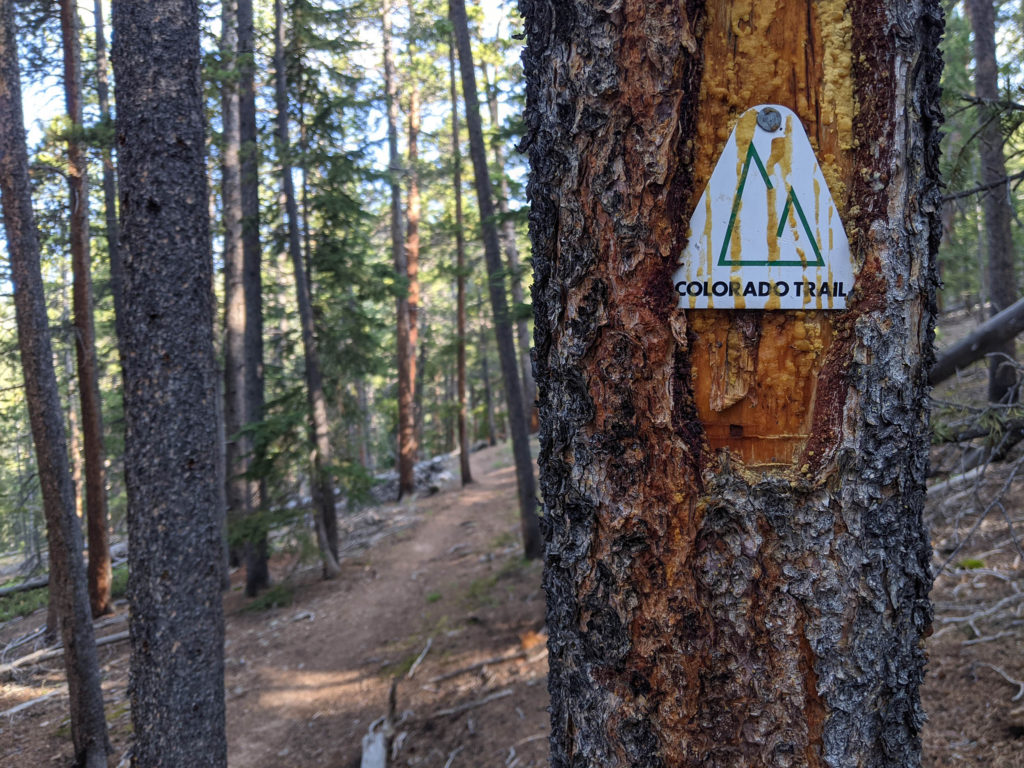
The hike: 160 miles, with more than 28,000 feet of elevation gain, in eight awesome and brutal days
This was a grind of a hike, and the aggressive pacing and challenging elevation gains made it a true endurance effort. I really pushed myself, felt exhausted at the end of every day and loved getting into that weird headspace that happens when you’re testing your mental and physical limits.
My typical daily routine broke down like this:
- Wake up at 6am with the sunrise
- Pack up campsite
- Hit the trail by 7am
- Hike from 7am to 7pm, stopping every hour or so for water, snacks, rest
- Set up camp at 7pm
- Exhausted in bed and asleep by about 8:30pm
No phone (other than to take the occasional photo), no texts, no emails, no music, no podcasts. The days flew by and it felt fantastic and refreshing to completely disconnect like that.
I absorbed myself in the hike, the moment and the movement, the crunch of the rocks under my feet, the rustling trees and streams, the tasks at hand: directions, weather, pacing, food, campsites, pain and inspiration.
There were intense climbs over passes; long treks through endless meadows; beautiful views; hot afternoons; euphoric, primal eruptions of triumph; and days filled with a flow-like, meditative rhythm of step after step after step after step.
The Colorado Trail is extremely well marked and I rarely used my GPS. I got lost for a brief stretch of about 15 minutes — I probably just missed an obvious sign — but found my way back to the trail without much trouble.
I came across pretty much the perfect number of people on the trail too. There weren’t too many people that it felt crowded, and there weren’t too few that you never saw anyone. It was a great mix of long stretches of solitary silence with the occasional social interaction and hiking talk.
There are a ton of good campsites along the trail and they’re generally easy to find. Three general rules for finding a campsite are: 1) camp in a spot that has been camped in before; 2) try to find a flat campsite; and 3) avoid areas with lots of fallen trees or potential widowmakers.
I hung my food and scented items 100 feet away from my camp, and usually tried to avoid eating at the campsite in hopes of eliminating food scents — and the attraction of bears and critters — so close to where I’d be sleeping.
Every day presented a new challenge, and the toughest one by far came on the third day, when my left calf, hamstring and posterior chain tightened up on me. It wasn’t a cramp, more like a flare up of tendonitis. This was probably due to the aggressive pacing, and also the fact that this was my first time hiking so many miles while carrying a pack.
For this reason I decided to pass on summiting Mt. Massive on the last day — it just would have been too much.
My leg loosened up a bit eventually, and I was able to get through the hike without any major delays, but it was (and is) still pretty tight and angry after the hike.
Otherwise I felt strong and capable most of the hike. Whenever a new pain point would surface — sometimes in my feet, sometimes in my hips — I would focus on my breathing and try to kind of meditate my way through the pain until it would eventually go away.
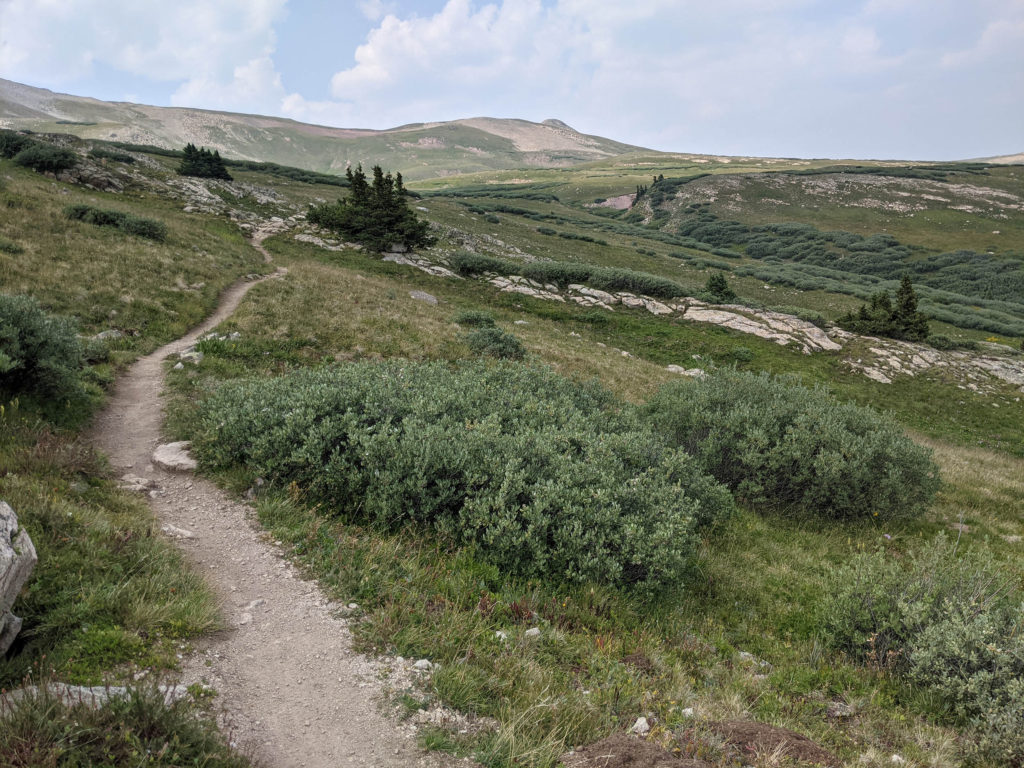
Dreams and conclusions
One really cool and unexpected part of this adventure was the number of vivid dreams I had. I feel like I was dreaming a lot more than regularly, typically experiencing three or four dreams each night. To me this reflects the unique place you travel to mentally, and the deep connection forged with your subconscious, when you push yourself to disconnect, struggle, and go into the wilderness alone.
It’s also probably partially due to a lot of anxiety. For example, on the first night I had a dream a bear was attacking my shelter in the middle of the night. I’m sure those types of nightmares decrease with more experience (ideally bear-free experience).
This hike lived up to all the wilderness hype and philosophical expectations I laid out earlier in this post. It was a great way to cap off the summer and get recharged before the fall semester starts back up and life gets crazy again.
My big takeaway isn’t anything all that profound: just confirmation of the vitality of these kinds of adventures.
As fun and important as the hike was, I don’t envision myself disappearing from society to live in the wilderness and spend all my time camping and through-hiking. Instead, I think it’s all about applying that Barbell Strategy to balance order and chaos: find a sense of purpose, contribute to society, work to build something, be strong and responsible, and find a way to weave in these jolts of solo adventures in the wilderness along the way.
I’m going to set a new recurring personal goal: go into the wilderness alone at least once a year.

